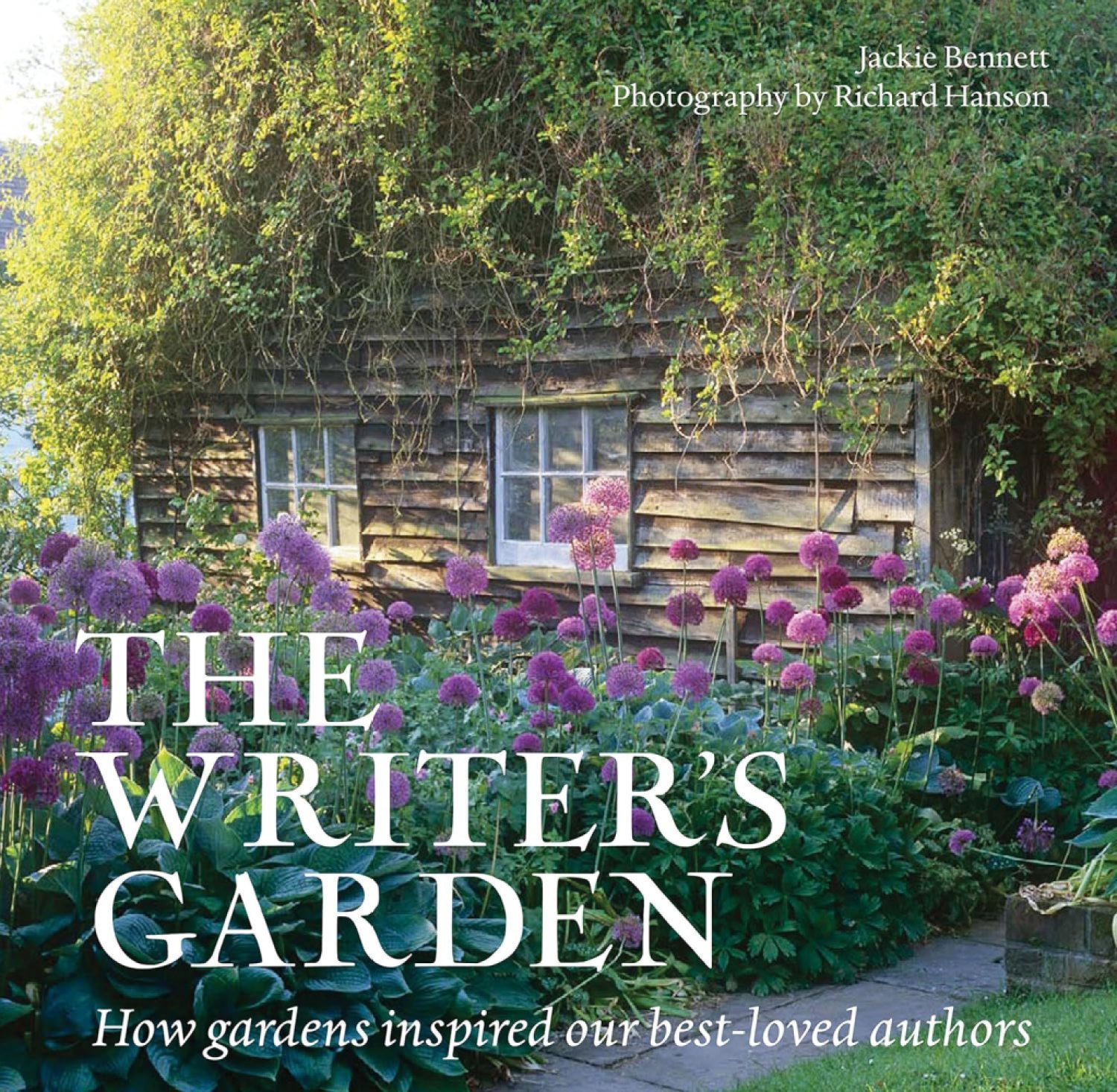Book Review | ‘The Writer’s Garden: How Gardens Inspired the World’s Great Authors’ by Jackie Bennett, with photographs by Richard Hanson
A Coffee Table Book Sure to Inspire Conversations — and Inspirations

Does a writer need a garden to write? Obviously not, but The Writer’s Garden: How Gardens Inspired the World’s Great Authors suggests that having one is a mark of success. Written by Jackie Bennett, with stunning color photographs by Richard Hanson, this is a handsome coffee table book sure to spark interesting conversations among those who leaf through its thick pages.
As Bennett points out, “gardens are not static objects like china or furniture, which can be put into storage and brought out again when needed with a light dusting. They grow quickly and within a decade of a gardener/owner leaving a particular plot, it can be changed beyond recognition — or be wiped out altogether.” Not surprisingly, therefore, many of the gardens described and photographed in the book have been extensively revamped. On balance, the further we are from the time the garden was owned by the writer, the more likely it is to be changed, although preservationists do their very best to recreate what they believe the garden might once have looked like in the writer’s time. Indeed, “for most gardens,” it is the work of dedicated volunteers that has enabled these memorable pieces of land to survive and thrive.
Bennett acknowledges that “writers are often itinerant, particularly in the early stages of their careers, moving from place to place to make a living and don’t stay long enough in one place to make a garden.” Instead, gardens are typically created later in a writer’s career, “when they have the financial means to buy their own home and make their mark on a landscape.” Most of the gardens discussed in the book were created in the area where the writer’s best-known work was written — Sir Walter Scott’s Abbotsford, Thomas Hardy’s Max Gate, Leo Tolstoy’s Yasnaya Polyana, William Faulkner’s Rowan Oak — though there are a few interesting exceptions, most notably Edward James’s Las Pozas.
James, a minor poet and patron of the arts, isn’t an easy fit for a collection about world famous authors, but his garden may be the most spectacular one in the book. Concrete pillars rise into the mists of the Mexican rainforest; the property is intersected by cobblestoned walks with names like The Path of the Seven Deadly Sins, and punctuated by surrealistic sculptures that merge with the lush flora. If James’s poetry had been a match for his imagination as a garden designer, he surely would have been one of the twentieth century’s titans of verse.
For many of the writers, their gardens seem to be as much showplaces to bring admirers and friends as they are places in which to sit and write. Most of the actual literary work was done inside houses and cottages, with the gardens offering a pleasant vista in between the composition of sentences. Virginia Woolf’s practice seems fairly standard among the writers we meet. While her husband “threw himself into the practical running of the garden, for Virginia it was a backdrop, a landscape for her thoughts and her writing.”
We may visit a garden because of its associations with a particular person or place, but what we really come to see are the plants themselves and the way they are arranged in the landscape. In that regard, the photographs in The Writer’s Gardenare its most remarkable feature. Hanson’s work is uniformly superb, so it is difficult to choose a favorite image, but among those I kept returning to were a cluster of white orchids at a Hemingway’s Key West home, a field of daffodils near Wordsworth’s Rydal Mount, the stone pines silhouetted against Lake Lugano at Antonio Fogazzaro’s Villa Fogazzaro Roi, the wisteria blooming against the slate walls of Beatrice Potter’s Hill Top, and, of course, the photos of Las Pozas.
What an unforgettable trip it must have been for Bennett and Hanson to visit and photograph these magical places, and a reader is likely to close this substantial volume a little envious of their good fortune and determined to visit as many of the gardens in person as possible, to pluck at least one flower of their own.This review originally appeared in the California Review of Books.

You must be logged in to post a comment.